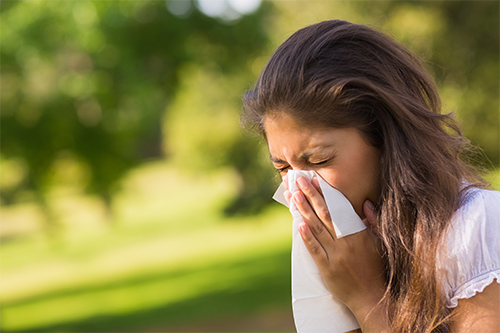 More than 50 million Americans suffer from allergies each year, according to the American College of Allergy, Asthma and Immunology. Most of these are from harmless outdoor plants. But good luck trying to tell your sinuses that!
More than 50 million Americans suffer from allergies each year, according to the American College of Allergy, Asthma and Immunology. Most of these are from harmless outdoor plants. But good luck trying to tell your sinuses that!
If your allergies are keeping you indoors at your lake house, they can all but ruin your summer. Here are some helpful tips on making a battle plan to beat lake allergies.
Know your Enemy
The most common culprits for lake allergies are pollen, dust, mold, animal dander and chemicals, such as tobacco smoke. If you suffer from regular allergy attacks, consider talking to your doctor. You may be allergic to something you never even considered! Getting tested can do away with the guessing game, and help you get relief.
If you know what allergy medication works for you, start taking the medication at the start of the season. This way, the medication can build up in your system.
Treat severe allergy attacks as soon as they come on. You may want to tough it out, but a severe allergy attack can quickly turn into a full-blown sinus infection.
Have a Battle Plan
A little forethought will save you and your nose a great deal of heartache, or worse, nose-ache in your battle against lake allergies.
If you are planning a trip to the lake, and are sensitive to pollen or mold, check your local news to see the pollen and mold count. Be sure to pack your medication if the count is high, and limit your physical activity outdoors.
Here’s a little-known fact: synthetic fibers have a static charge that actually attracts pollen! Wearing natural fibers, such as cotton or wool, will actually give you a head start in beating pollen.
If your allergies are severe enough to require an epipen, be sure to pack it! Make sure you aren’t the only one who knows where it is and how to use it, too.
On the Homefront
Allergens can build up in a home, especially on the lake. A little cleaning can make your lake home a safe haven from pesky allergens.
Experts recommend changing out an air conditioner filter every six to 12 months for a vacation home, and every 90 days for a standard dwelling. Add a dog or cat into the mix, and you should change it every 60 days.
If you have water equipment, such as life preservers, try not to store them in the house, such as in a closet. Even if kept clean, these can be a source of mildew and mold. Keep water equipment in the garage or shed, and make sure they dry out completely before storing. Doing this can cut down on your lake allergies much more than you might think.
After you come inside, leave your shoes at the door to avoid tracking pollen and dust everywhere.
Wash and dry your linens, blankets and towels regularly. Curtains and other upholstery should be washed at least once a year, as well.
If you use a humidifier, be sure to clean it regularly so it doesn’t become a breeding ground for mold or bacteria.
More deep cleaning advice can be found here.
“We shall fight on the beaches…”
Allergies related to lake water itself are typically mild. Children, or those with sensitive skin, may be especially susceptible. These usually stem from an allergic reaction to algae or mold, and can often be avoided by quickly showering after a dip in the lake.
If someone experiences tingling, itching or burning of the skin after a swim, “swimmer’s itch” may be to blame. This is caused by contact with certain seasonal, microscopic parasites that can infest lake-dwelling wildlife, primarily snails.
Contact with these parasites irritates the skin, and can cause a rash, or even blisters. The rash typically pops up within hours or days of contact with the water.
Fortunately, there are no further health effects. Swimmer’s itch typically goes away on its own after roughly a week. Corticosteroid cream, cool compresses and other anti-itch creams can soothe the outbreak.
To reduce the risk of swimmer’s itch, avoid swimming in areas of the lake where it is a known problem, or where signs have been posted warning the water is unsafe. Avoid wading in areas with large numbers of snails, as well. Areas of the lake where swimmer’s itch occurs are not “off limits” forever, but should be avoided for at least a few weeks.
For more information on swimmer’s itch, visit the Centers for Disease Control and Prevention’s webpage at https://www.cdc.gov/parasites/swimmersitch/faqs.html.

